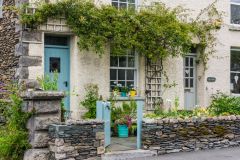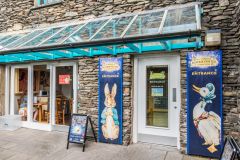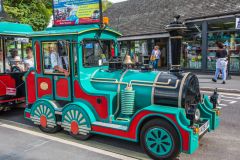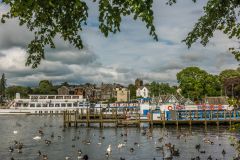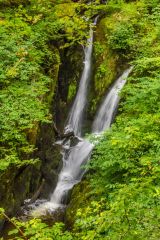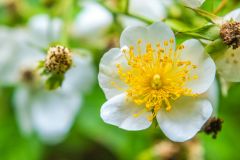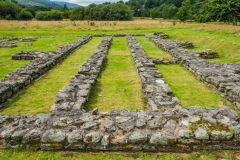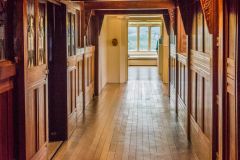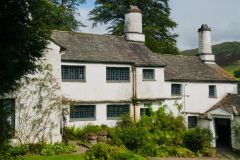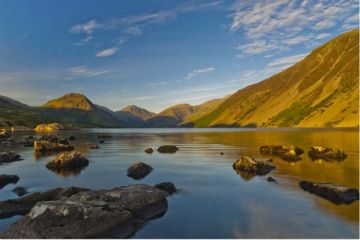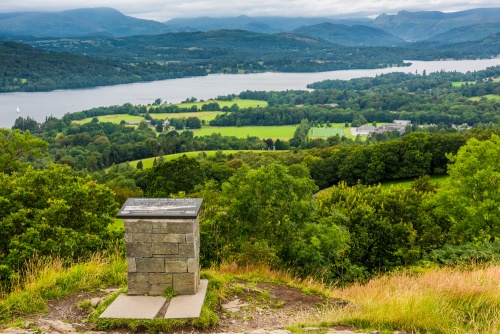
Windermere is the largest lake in England, and a magnet for visitors to the Lake District National Park. If we are being pedantic, the lake is simply 'Windermere', not 'Lake Windermere', but since Windermere is also the name of the popular village on the east bank of the lake, we'll call the body of water Lake Windermere to distinguish it from the village.
The lake stretches 10.5 miles from the National Trust estate at Fell Foot, near Newby Bridge in the south, to Ambleside at the northern tip of the lake. The lake is one mile (1.6km) wide and 220 feet (100m) deep and encompasses an area of 5.7 square miles (14.8 square km).
The name of the lake is a combination of Norse and Old English words. From the Norse comes Winder, derived from the proper name Vinandr. The suffix mere is Old English for a body of water, so Windermere means Vinandr's lake. Unfortunately, we do not know who Vinandr was or when he lived. Until the 19th century it was known as Winander Mere.
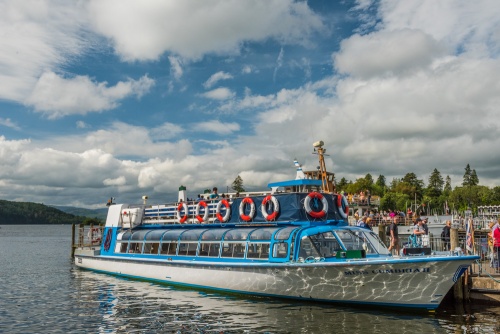
Lake Windermere is fed by several rivers and streams, including the rivers Brathay and Rothay, Trout Beck, and Cunsey Beck. The River Leven flows out of the southern tip of the lake and after much meandering, it empties into Morecambe Bay.
Low hills rise from the lakeshore on both flanks, offering relatively easy walking. By contrast, the much high Lakeland fells to the north offer more challenging walking opportunities.
Historically, the lake formed part of the county border between Westmorland and Lancashire. Government reorganisation in the 20th century means that the lake is wholly within the new county of Cumbria.
The eastern shore of the lake is more settled, with easier access to facilities. The A591 and A592 roads run along the eastern shore, while the western shore is served only by a few very minor roads and none of them follows the lakeshore for any great length.
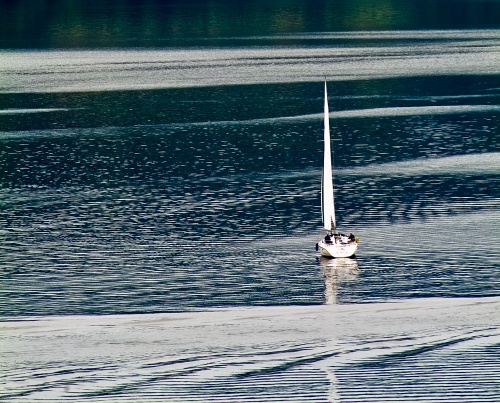
Passenger boat services link Lakeside, at the southern end of the lake, to Ambleside in the north, with a stop at Bowness. Some smaller services also stop at Brockhole, the National Park visitor centre. A summer-only ferry connects Lakeside to Fell Foot Park.
Lake Windermere is an extremely popular location for pleasure boating. There are five boating clubs on the lake offering members and visitors alike the chance to enjoy power-boating, sailing, and rowing. You can explore the history of boating on Windermere at the Windermere Steamboat Museum in Bowness, where you can see a collection of vintage steam vessels dating back to 1780.
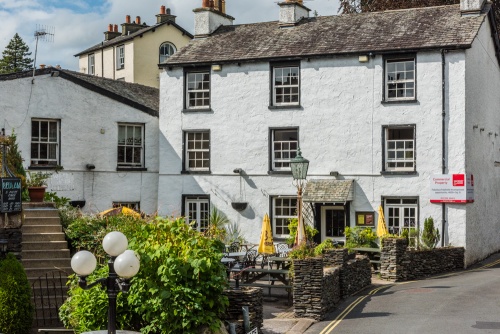
The Eastern Shore
Bowness-on-Windermere
Only one village is directly on the lake itself. That is Bowness (or, more properly, Bowness-on-Windermere). It is no surprise that Bowness is the terminus for several popular pleasure boat services that carry visitors up and down the lake. There is also a foot-passenger ferry from Ferry Nab across the lake to Far Sawrey. A summer-only service links Bowness to Far Sawrey.
Bowness is also home to the popular visitor attraction, The World of Beatrix Potter, where you can learn more about the remarkable artist and storyteller Beatrix Potter, who lived at Hill Top, across the lake.
Windermere
The village of Windermere did not exist until the arrival of the railway in 1847. The railway terminated near the farm of Birthwaite, and a new village named after the farm sprang up around it.
By 1859 residents were calling the new village Windermere, after the nearby lake. Over time the new village grew towards the existing settlement of Bowness on the lakeshore. Though the two villages are technically separate entities, you would be hard-pressed to know where one ends and the other begins.
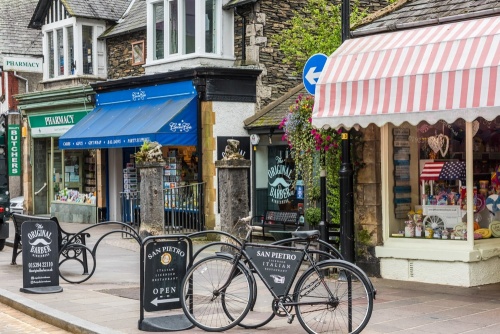
Brockhole Gardens
Outside Windermere is Brockhole, a late-Victorian mansion built for a wealthy silk merchant from Manchester. The mansion stands at the top of a slope looking west over the lake. Below the house are 30 acres of terraced gardens designed by Thomas Mawson, who also laid out the gardens at Greythwaite Hall and Holker Hall.
In 1966 Brockhole became the very first National Park Visitor Centre in the UK. It's the perfect place to learn about all there is to see and do the National Park.

Holehird Garden
Just over a mile away is Holehird Gardens, created by the Lakeland Horticultural Society. Holehird is home to four national collections; astilbe, daboecia, polystichum, and meconopsis, as well as the Lakeland collection of hydrangeas. The 10 acres of gardens offer superb views across the lake and west to the Lakeland Fells.
Less than a mile from Holehird is Townend, a rustic 17th-century yeoman's cottage restored by the National Trust. Townend was built in 1626 and offers a fascinating glimpse of what life was like here in the Lake District centuries ago.
Ambleside
The attractive Lakeland town of Ambleside is a popular walking centre, with shops catering to outdoor pursuits. But walkers were not the first to discover Ambleside; the Romans built a fort by the lake, known as Galava, and you can still see the foundations of the fort's major buildings.
A short but strenuous walk from the town centre brings you to Stock Ghyll Force, one of the most popular waterfalls in the Lake District - and one of the easiest to reach. In the centre of Ambleside is Bridge House, a picturesque 17th-century cottage built directly over Stock Beck. Over the centuries this amazingly small cottage has been a counting house, a tearoom, a shop, and a residence for eight people.
On the edge of Ambleside is Stagshaw Garden, a beautiful woodland garden on a sloping site overlooking the lake. Beside Stagshaw is Skelghyll Wood, a 95-acre ancient woodland boasting some of the tallest trees in Britain. Within Skelghyll Woods is Jenkins Crag, one of the Lake District's most popular viewpoints.
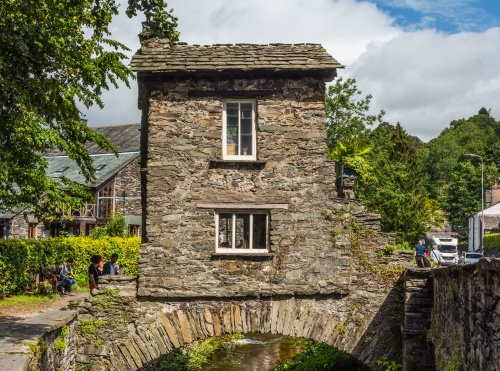
Blackwell
Just outside Bowness-on-Windermere is Blackwell, a stunning Arts and Crafts house built in 1900 for a wealthy Manchester brewer. The interior of Blackwell almost defies description; at the centre of the house is a great hall in medieval style, illuminated by stained glass windows and highlighting mosaic floors. Blackwell is one of the most memorable historic houses in Britain.
Fell Foot
While most visitors to Lake Windermere make a beeline for the northern end of the lake, don't miss Fell Foot Park in the south-eastern corner, close to Newby Bridge. Fell Foot dates to the 18th century but the estate we see today was developed by Colonel George Ridehalgh.
Colonel Ridehalgh was a passionate sailor and built a complex of neo-Gothic boathouses and docks on the lakeshore below his mansion. The mansion is now gone, but the boathouses remain, as does part of the Fell Foot gardens, stretching along the shore and up the surrounding slope. Fell Foot is now run by the National Trust and is a very good centre for enjoying water sports.
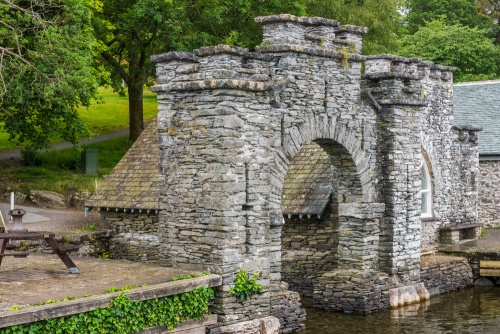
The Western Shore
The western shore of Lake Windermere is far less developed than the eastern shore. There are fewer visitor attractions and the roads are narrower. That also means it is less crowded!
Stott Park Bobbin Mill
Just around the end of the lake from Fell Foot Park is the historic Stott Park Bobbin Mill, owned by English Heritage. The mill produced bobbins for the Lancashire cotton mills that helped drive the Industrial Revolution. The mill began in 1835 and closed in 1971.
It has been restored to full working order and you can trace the history of bobbin-making from start to finish, and watch skilled tradesmen at work. It is a fascinating process, and the mill offers a glimpse into what life was like for the men, women, and children who worked here in sometimes dangerous conditions.
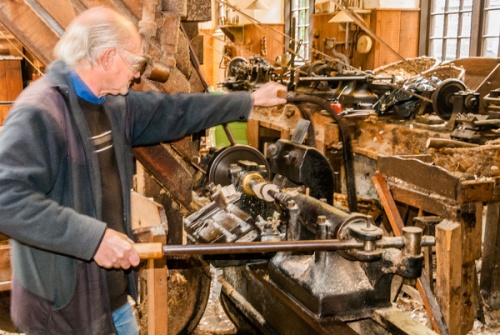
Greythwaite Hall Garden
Further up the lakeshore is the historic house of Greythwaite Hall, a 17th-century house surrounded by superb gardens laid out by Thomas Mawson in 1896. This was one of Mawson's first major commissions and helped make his reputation as one of the leading garden designers of the late-Victorian era. The house is not open to visitors but you can explore the gardens, including a rustic bridge, a spring garden of flowering shrubs, and a formal Dutch garden.
Claife Viewing Station
On a hill looking across the lake to Windermere village is an 18th-century viewing platform in Gothic style, where early visitors to the Lake District could experience picturesque views over the lake to Bowness. The viewing platform had large windows bordered with stained glass to frame the views like a painting. Visitors were expected to be overwhelmed by the scenic splendour to the point of swooning with delight.
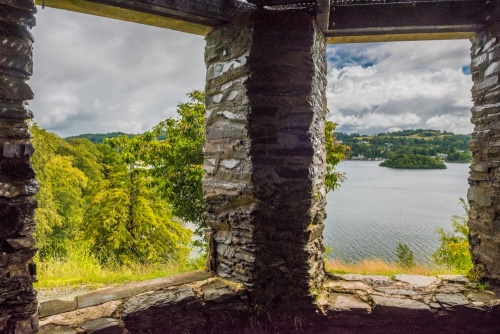
Wray Castle
Four miles up the shore from Claife stands Wray Castle, a Gothic Revival country house built in 1840 for a wealthy Liverpool surgeon. Poet William Wordsworth loved Wray Castle for its picturesque qualities and planted a mulberry tree in the garden. Beatrix Potter stayed at the castle as a child, and Canon Rawnsley, one of the founders of the National Trust, was the parish vicar.
Hill Top
Beatrix Potter's home at Hill Top is just a few miles from the lake at Near Sawrey. It was here in this pretty 17th-century house that she wrote many of her most famous stories, and readers will recognise features of the house and garden that she incorporated into her drawings.
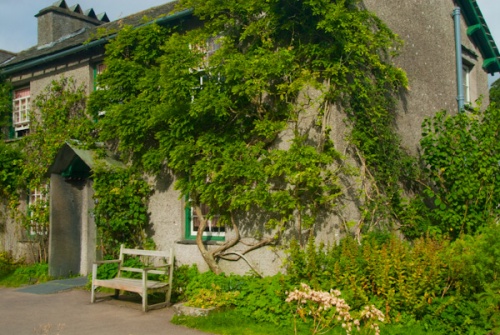
Grizedale Forest Park
Stretching between the western shore of Lake Windermere and Coniston Water is Grizedale Forest Park, a woodland park once owned by the monks of Furness Abbey but now operated by the Forestry Commission. Striking sculptures are scattered throughout the woodland, including hands-on musical instruments made of wood. Follow the well-marked trails linking some of the most popular sculptures for a real family-friendly outing.
Getting There
Lake Windermere is on the A592 from Newby Bridge in the south and the A591 from Ambleside in the north. You can also take minor roads down the west shore from Newby Bridge and via Ambleside. The main National Park visitor centre is at Brockhole, near Windermere, while Ambleside offers the most visitor facilities.
There is a huge choice of accommodation on both sides of the lake but Windermere, Bowness, and Ambleside offer many more hotels and B&Bs, while you are likely to find a wide choice of holiday cottages on both sides of the lake.
About Lake Windermere
Address: Lake District,
Cumbria,
England
Attraction Type: Countryside - Lake
Location: The A592 and A591 run up the eastern shore of the lake. The major towns are Ambleside, Bowness, and Windermere, all on the eastern shore.
Location map
OS: SD394982
Photo Credit: David Ross and Britain Express
HERITAGE
 We've 'tagged' this attraction information to help you find related historic attractions and learn more about major time periods mentioned.
We've 'tagged' this attraction information to help you find related historic attractions and learn more about major time periods mentioned.
Find other attractions tagged with:
NEARBY HISTORIC ATTRACTIONS
Heritage Rated from 1- 5 (low to exceptional) on historic interest
Brockhole Gardens - 1.6 miles (Garden) ![]()
Claife Viewing Station - 1.7 miles (Historic Building) ![]()
Holehird Gardens - 1.9 miles (Garden) ![]()
Wray Castle - 2.1 miles (Historic House) ![]()
Hill Top - 2.2 miles (Historic Building) ![]()
Blackwell, the Arts and Crafts House - 2.3 miles (Historic Building) ![]()
Townend - 2.5 miles (Historic House) ![]()
Hawkshead Grammar School - 2.6 miles (Historic Building) ![]()
Nearest Holiday Cottages to Lake Windermere:
Bowness-on-Windermere, Cumbria
Sleeps: 6
Stay from: £1507 - 5466
Bowness-on-Windermere, Cumbria
Sleeps: 6
Stay from: £1008 - 3517
More self catering near Lake Windermere
